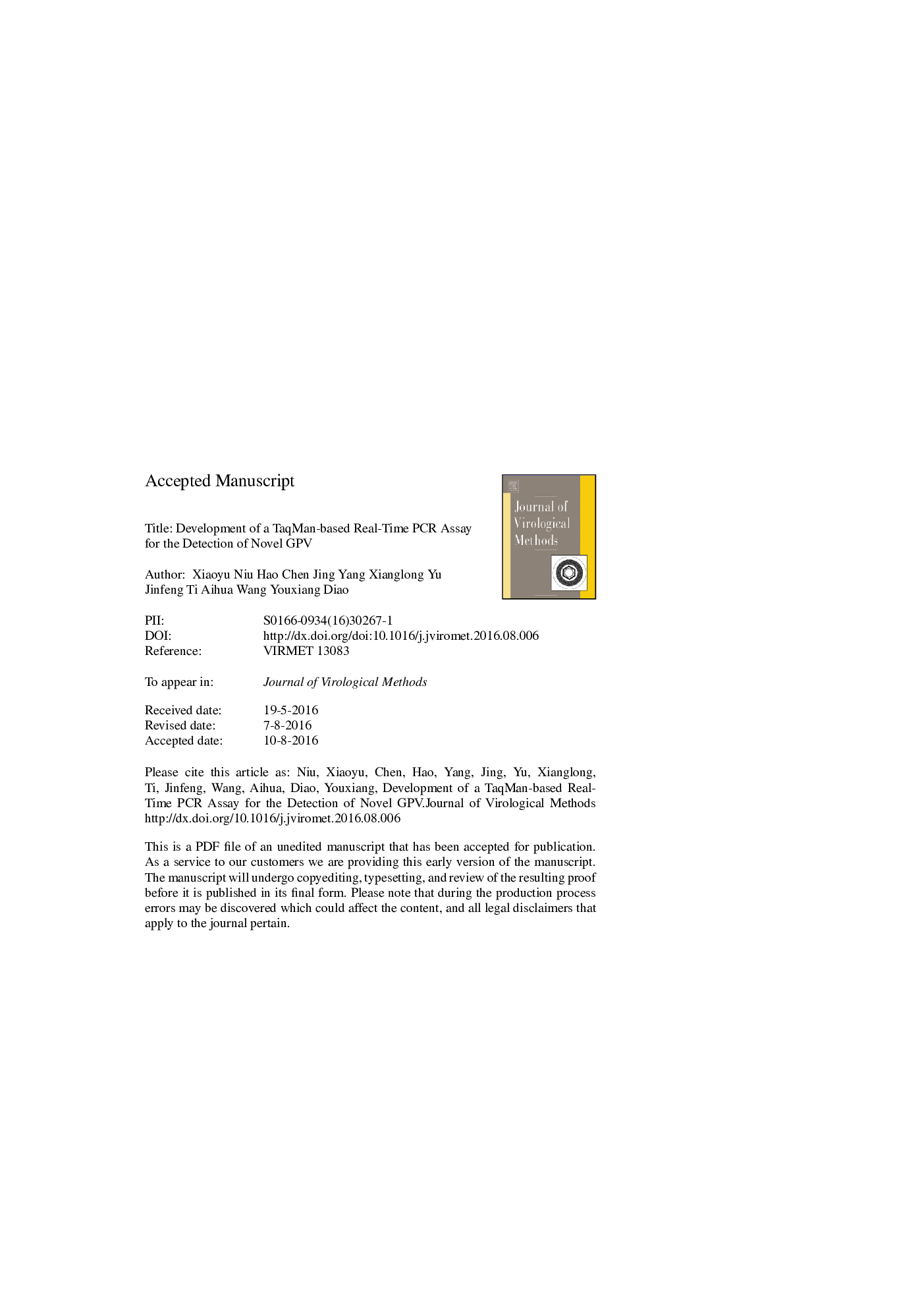| Article ID | Journal | Published Year | Pages | File Type |
|---|---|---|---|---|
| 6132658 | Journal of Virological Methods | 2016 | 19 Pages |
Abstract
The newly emerged disease, duck beak atrophy and dwarfism syndrome (BADS), is caused by novel goose parovirus (N-GPV). Although N-GPV infection has severe consequences, few methods for detecting this virus have been developed. Therefore, the availability of rapid and reliable molecular diagnostic methods would aid future studies of this novel virus. Clinical specimens from 138 suspected cases of N-GPV infection and 120 cloacal swabs from breeding ducks were used in this study. The targeted sequence of N-GPV cloned into the pMD18-T vector was used to generate the N-GPV DNA standard curve. The specificity of the assay was validated using duck plague virus, GPV, duck hepatitis virus, avian influenza virus, duck reovirus, tembusu virus, and fowl adenovirus. The lowest limit of detection was 8.8 Ã 101 copies/μL with a good linear standard curve (Y = â3.3682X + 37.220, R2 = 0.9953) over a wide range of input DNA, of which the concentration was between 8.8 Ã 101 to 8.8 Ã 108 copies/μL. The results show that the real-time PCR assay is a highly sensitive, specific, reproducible, and versatile method for quantitatively detecting N-GPV DNA, and thus can be used to detect this virus, thereby facilitating epidemiological investigations of animals with BADS.
Keywords
Related Topics
Life Sciences
Immunology and Microbiology
Virology
Authors
Xiaoyu Niu, Hao Chen, Jing Yang, Xianglong Yu, Jinfeng Ti, Aihua Wang, Youxiang Diao,
